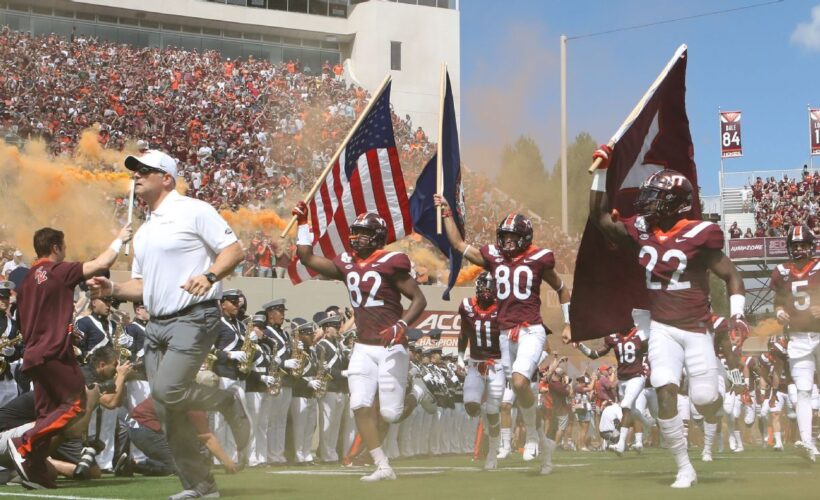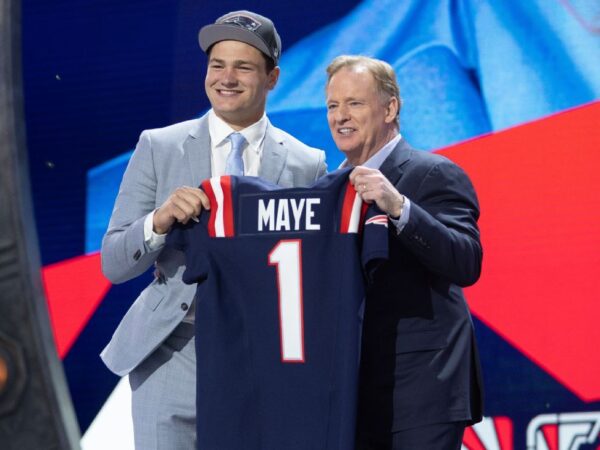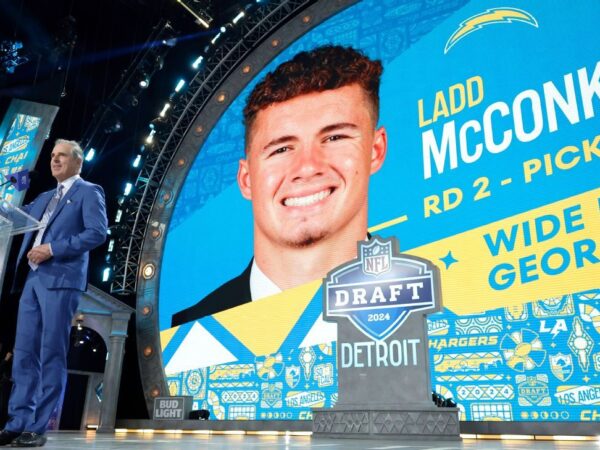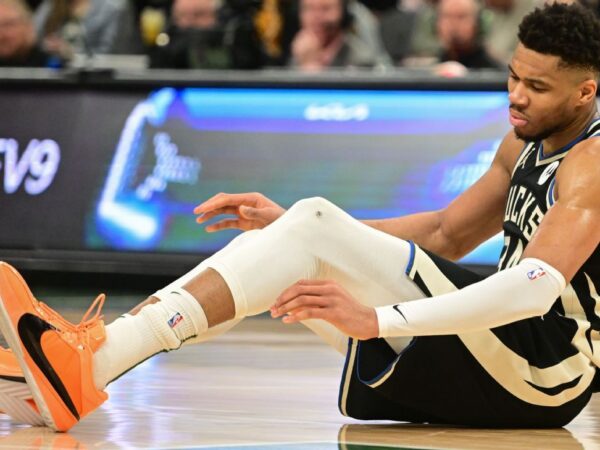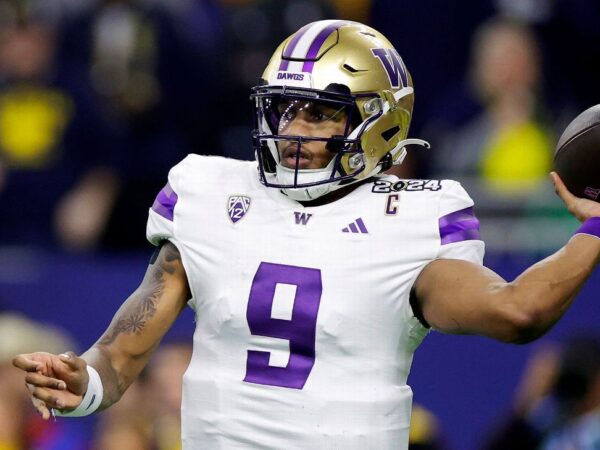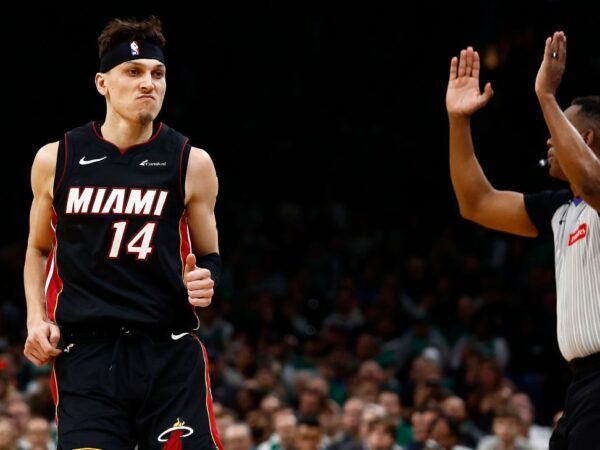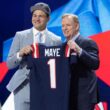Virginia Tech coach Brent Pry inherited a program in 2022 that had lost its way, more than a decade removed from its last conference championship.
Though Pry had zero head-coaching experience, he had spent the previous eight years at Penn State, coaching and recruiting in the Big Ten. Perhaps most importantly, he was the candidate with the most extensive ties to Blacksburg and legendary coach Frank Beamer. When Pry was introduced as head coach, athletic director Whit Babcock proclaimed, “It’s nice to see this place reunited.”
Then Pry went 3-8, giving Virginia Tech its first losing season in 30 years. Though Pry remains optimistic about the future — “I’m the right guy for this place, and this place is right for me” — one major question persists:
Can Virginia Tech still compete at the highest level of college football?
Beamer took Virginia Tech to unprecedented heights — six BCS games, including one national championship game appearance, and a string of eight consecutive 10-win seasons from 2004 to 2011. His successor, Justin Fuente, won 10 games in his first year, then went 33-27 over the next five amid what sources described as a “dysfunctional” relationship with the administration.
Now it is up to Pry, a former assistant under Beamer in the 1990s, to return the program to relevance. Virginia Tech has spent more than $100 million to improve its facilities and resources, but is that enough for the Hokies to compete with the ACC’s top teams or the charged-up Big Ten and SEC?
Answering that question requires a deeper examination of how Virginia Tech fell so far in the first place. ESPN spoke to more than 30 former and current coaches, players, administrators and staff at Virginia Tech to see how things unraveled in the post-Beamer era. What emerged was a portrait of a department in disarray, from the top of the administration down, as the football program grappled with its storied past and a future that required far more investment and forward-thinking than ever before.
WHEN FUENTE WAS hired to take over the program before the 2016 season, he appeared to be a perfect fit — a 39-year-old, up-and-coming coach who transformed Memphis from a losing program into a 10-game winner. He even agreed to keep longtime Virginia Tech defensive coordinator Bud Foster on staff, as a way to help ease the transition.
Fuente understood it would be difficult as the immediate successor to Beamer, who went 238-121-2 during his 29 years as head coach. Beamer not only won at a high level, he was so present and down to earth that the fan base considered him part of their family. Beamer has never met a stranger; Fuente is far more reserved.
Fuente, who declined to comment for this story, has previously said he knew the challenges at Virginia Tech. In an interview with ESPN in 2016, Fuente said, “Replacing a guy like that, you just try and add to the things he’s already accomplished. We have a lot of work to do to get back to the level that Virginia Tech fans expect. We know that. We welcome that challenge.” What became challenging, according to sources familiar with the situation, was how hard it would be to change the overall mindset when things had been done one way for 29 years.
In retrospect, Babcock agrees.
“What I do realize now is it’s a lot harder to follow a legend than I anticipated, and that has nothing to do with Coach Beamer,” Babcock said.
On the outside, it appeared the transition was going smoothly at first. Fuente won 10 games and took Virginia Tech to an ACC championship game in his first year. Behind the scenes, he faced challenges. Among the most difficult, according to sources inside the program, was a fractured relationship with executive associate athletic director John Ballein.
Ballein arrived at Virginia Tech in 1987 as a graduate assistant on Beamer’s first staff and served as football ops director for 20 years — working as Beamer’s right-hand man. Babcock placed Ballein as football administrator in 2017, believing he could help Fuente.
Instead, several sources said Fuente and Ballein clashed from the start. “I don’t think he was a big Justin Fuente fan,” said one former staff member. “John never really got a great feel for him initially. I don’t think he went out of his way to be great with Justin, but I don’t know if Justin really wanted John to do that.”
Multiple sources, including both former and current staffers in the athletic department, described their relationship this way: Ballein believed in the way he ran things under Beamer. Under Fuente, he bristled at requests to change, and that ultimately forced the program into limbo — caught between the old guard and the new. Beamer remained a presence in Blacksburg, too. He would bring his dog to campus every day for lunchtime walks he took with Ballein.
“Do I think Justin was the right fit when they hired him? Yes. Absolutely,” said one source who worked in the Virginia Tech administration. “But I don’t think Nick Saban could have gotten himself out of the sandbags they attached to him.”
Babcock said the only time Fuente raised concerns about Ballein was in reference to wanting to do things “his own way, wanting to make a clean break.” But others both inside the football and athletic department painted a different picture.
The two rarely agreed and often butted heads in terms of what players needed and how the football program should be run, according to multiple former and current staff members.
“If we talked about what kind of grass to plant, what kind of fireworks to shoot, the first question out of everybody’s mouth was, ‘What would Coach Beamer want?’ That never happened with Coach Fuente,” said one source, who still works at Virginia Tech, referring to a perceived lack of power for Fuente. “Never. The support to serve the guy that they hired was not there.
“It blows my mind as an institution we let it get to this point over petty bull crap. What should have happened in my mind is Whit should have gotten Coach Fuente and John Ballein in a room and said, ‘Y’all better work this crap out. Find a frickin’ way or we’re all going to lose our jobs.’ I don’t think that ever happened.”
When asked if he thought there was any division within his administration, Babcock repeatedly denied knowing about any tensions.
“I’ve never seen any evidence, heard it secondhand, no examples, never any proof of John ever undercutting anything that Justin Fuente did.”
Ballein was not made available to comment for this story. Babcock said it was his decision to remove Ballein as sport administrator in 2018 and replace him with senior associate athletic director Danny White, who remains in that position today.
“I really wanted to help Justin do it his own way,” Babcock said. “I realized you can’t turn back the clock, and I thought Danny would bring a fresh set of eyes to it.”
Even though Ballein was moved out as football administrator, multiple former football staffers said his presence loomed large. “It was kind of like the Wizard of Oz,” one former football staffer said. “You know he was up there and behind the curtain of what’s getting shot down.”
THE PROGRAM FUENTE took over was no longer a championship-caliber contender. In 2014 and 2015, Beamer’s final two seasons, Virginia Tech needed wins over Virginia in the regular-season finale just to keep its 23-year bowl streak alive.
It was also around this time that the financial disparities between Virginia Tech and other Power 5 programs — in facilities, salaries and staffing — started to come into sharper focus. In 2017-18, for example, Virginia Tech ranked sixth out of eight public schools in the ACC in total operating expenses ($93.6 million).
“Coming into Virginia Tech, I was like, ‘Well, it’s a bigger-name place,’ and from the very beginning, I was stunned at how far behind they were and the lack of communication with the athletic department,” said one football staffer who previously worked at another Power 5 school. “The facilities were way behind, they didn’t have many positions and salaries weren’t great. I don’t know a better way to say it, but I was like, ‘What the F?'”
Fuente had five combined operations and recruiting staffers when he arrived. During the same time frame, Clemson had 22 ops and recruiting staffers. When it came to the salary pool to hire and retain full-time assistant coaches, Virginia Tech had roughly half of what ACC champion Clemson had.
“Justin was being asked to compete against Clemson, which isn’t realistic because their budget was so much larger,” one fundraising source said. “I was taken aback how there wasn’t any sort of being proactive, raising money for Justin. Think if that money had been invested in football.”
At the time, freshman football players on campus for summer workouts were housed in dorms without air conditioning, sometimes three to a room, for up to two months before being moved to their permanent housing for the year. Babcock said there remain some dorms on the Virginia Tech campus without air conditioning, and when they found out about football players placed there, “especially during August preseason camp, we worked to get them moved. That was an area that we didn’t feature much in our recruiting, and that’s what led to the construction of a $100 million football dorm.” The new dorm is shared with other students and is patterned after Auburn’s and Alabama’s. It’s a major improvement over what athletes had to endure before.
“There were nights I sweated bullets and couldn’t sleep, and I had to be up for practice,” one former player said. “You can’t preach doing the little things to us, and then y’all got us doing this. It turned into a big deal because I’m not getting good rest or I’m not making weight. It doesn’t make sense.”
There were other problem areas. Virginia Tech did not have a dedicated dining hall at the time, nor a standalone football facility. Players complained about getting their stipend checks late, forcing some to be late with their rent payments. A Virginia Tech spokesperson said checks can be withheld if an athlete has a hold on their account. Holds can occur for items ranging from unpaid parking tickets to student conduct issues. But one former staffer pushed back on this assertion, saying there was constant miscommunication with the financial office, which sometimes mailed checks to the wrong address. Players also pointed to their apparel, a matter of pride for many college athletes. Virginia Tech’s Nike contract, which pays roughly $1.98 million in cash and apparel annually, ranked among the worst deals in the Power 5. Babcock said players got everything they needed, but players complained gear was in short supply.
“Say you needed new gloves, they would fight you and not try to give you another pair of gloves for practice,” another former player said. “So you get one of each and everything, and if you lose it, it’s over with, you can’t get another.”
According to one former football staffer, Fuente asked assistant coaches to pool together extra gear and give it to players as part of a reward system. Oftentimes that meant non-Nike-issued gear in player lockers. It became a running joke.
“I’m thinking, that’s unbelievable that we’re doing a clothing drive for our own team,” the former football staffer said.
Babcock said the athletic department started using its own money to buy more gear to alleviate worries from players and coaches across all sports.
From a facilities standpoint, Fuente was able to get support from Babcock and the administration to make some much-needed upgrades. Virginia Tech spent more than $120 million to upgrade its facilities and resources while Fuente was there — including a weight room and a dining and nutrition hall in addition to the new athletics dorm.
“I can’t think of a single example — ever — where Justin asked for anything that would advance the program that I ever said no to,” Babcock said.
But Virginia Tech didn’t always execute those upgrades competently. Several players pointed to a remodeled and expanded weight room that opened in 2021 — without new weights. As a cost-saving measure, Virginia Tech administrators made the decision not to buy new weights because, as Babcock told ESPN, “Weights weigh the same.”
That decision became problematic when weights went missing because they were left unsecured during the pandemic. When the new weight room opened, the strength staff had to go to the university’s Department of Recreational Sports to borrow weights.
“It was always something,” said a former player.
Virginia Tech eventually bought new weights. But by the time all these projects were completed, Fuente’s own future at the school was in jeopardy.
INDEED, DURING THE 2018-19 season, 20 players entered the portal. According to multiple sources, the staff viewed the transfers as “addition by subtraction.”
“You could point the finger, but at the end of the day, it’s a little bit on everybody,” said defensive lineman Houshun Gaines, who played at Virginia Tech from 2016 to ’18. “Everybody has to do a better job — players have to do a better job of trying to get the coach to trust them, and then the coaches have to be more trusting.”
Other players viewed the situation differently. In one highly publicized incident, multiple players told Sports Illustrated in 2019 that a teammate wanted to throw the 2018 regular-season finale against Marshall so they could go home instead of keeping the school’s bowl streak alive. Virginia Tech won. That teammate was no longer with the program in 2019.
Multiple players told ESPN they felt their departed teammates were treated unfairly; others said because there was so much roster turnover, they could not gain the cohesion and chemistry necessary to be a complete team. Others pointed to growing distrust with the football staff.
“We had no relationships anymore because of all the controversy that was going on within the walls,” one former player said. “It was terrible. Nobody wanted to be there, we were leaving on weekends right after the games, we protested practice once, like they did not go to practice, they all stayed in the back of the parking lot.”
Quincy Patterson II, who transferred from Virginia Tech after the 2020 season, played at North Dakota State and Temple after he left the Hokies.
“I always thought it was strange the amount of hate Fuente got, even from the people on the team,” Patterson said. “The fans took it to a whole new level with the hate for Fuente, and then the players kind of built off that, like, ‘Oh yeah, what they’re saying is true,’ even if it wasn’t necessarily true. And I feel like that’s kind of how he got so bashed.”
The situation became further inflamed, both publicly and within the administration, in January 2020, when Fuente interviewed with Baylor to replace coach Matt Rhule, who had moved on to the NFL’s Carolina Panthers. The news was not taken well in the locker room, within the administration or among the fan base. Even though Fuente decided to stay with the Hokies, sources indicated Babcock was upset with the way Baylor and Fuente handled the entire situation.
Heading into the 2020 season, tensions were high. With looming pay cuts, reductions to an already tight budget and COVID-19 leaving only 49 scholarship players available for the opener, a meeting between Babcock and Fuente grew contentious. Their yelling was so loud that those in surrounding offices could hear the shouts.
“That’s a personnel-related issue,” Babcock said of the meeting. “I don’t think it’s rare, though, hypothetically, for ADs and coaches to sometimes have direct, hard conversations.” Asked whether they raised their voices, Babcock said, “I don’t recall.”
Virginia Tech went 5-6 in 2020, and speculation swirled about Fuente’s future. At the same time, Shane Beamer, son of Frank Beamer, had drawn interest from South Carolina for its open head-coaching job. Beamer was an Oklahoma assistant at the time, and had coached with his dad in Blacksburg from 2011-2015.
Once those reports surfaced, multiple sources with knowledge of the situation indicated three people who did not work for the school but had deep Virginia Tech ties reached out to Shane Beamer to gauge his interest in the Virginia Tech head-coaching job. They said if he wanted to be the head coach at Virginia Tech, they would talk to Babcock on his behalf.
That conversation never happened. Shane Beamer wanted the South Carolina job, and was hired Dec. 6. Babcock said he never spoke to Beamer. When reached by ESPN, Beamer declined comment.
On Dec. 15, Babcock announced Fuente would return. He also maintained that Fuente’s $10 million buyout was not a factor in the decision. “I believe in Justin,” Babcock said. “It’s not always the fashionable thing to keep somebody when everybody is yelling, but he’s our guy, and I believe he gives us the best chance to be successful.”
Babcock also announced they had a plan to bring the football budget into the top third of the ACC. In April 2021, Virginia Tech launched a $400 million fundraising campaign — with the hopes of using $30 million for a “football enhancement fund.”
Fuente had to win in 2021. A Week 1 victory over No. 10 North Carolina certainly drew attention, but then the losses started to mount. After Virginia Tech blew a nine-point lead against Syracuse with five minutes to play in late October, fans started chanting, “Fire Fuente!”
Sitting at 5-5, Fuente and Virginia Tech parted ways. He left with a 43-31 record at the school.
Fuente made mistakes — he waited too long to revamp his coaching staff and did not recruit the state of Virginia well. The quarterback position never developed after quarterback Jerod Evans’ departure for the NFL draft following the 2016 season. Multiple starting quarterbacks eventually transferred, including Hendon Hooker, who ended up starting at Tennessee and winning SEC Offensive Player of the Year in 2022 before becoming a third-round pick of the Detroit Lions this past spring.
“The whole time we were thinking that we know Hendon Hooker is a great quarterback, and he can lead us to wins,” said one player on the 2021 team. “But they wouldn’t hear that from the players.”
It was just another thread to pull in the unraveling of Fuente as head coach.
“There’s only so much you can fight off,” Patterson said. “When you get that much hate, and that much negative energy put towards you, it’s kind of hard for you to go to work every day and not think about it. You kind of succumb to the pressure.”
SO HOW DOES Virginia Tech find success again?
Bringing in a coach to engage more in the community and recruit the Virginia footprint were at the top of the priority list when Babcock set out to hire a new head coach. Those two criteria also happen to fit the Frank Beamer way. Hiring Pry — who worked as a graduate assistant under Beamer from 1995 to ’97 and still had ties to Ballein — felt strategic in many ways. To move on from the Fuente era, Babcock wanted to lean heavily on the past.
Said Beamer of Pry: “I’ve always thought he was a smart guy. Some people understand the game, some people the dots don’t connect, but I always thought he had that. He’s got a great background — wants to be at Virginia Tech. I think it’s the perfect match.”
But so much has changed. When Beamer was head coach, he did not have to worry about much of what keeps coaches up at night today, including the transfer portal, NIL, growing television revenue gaps and skyrocketing coaching salaries. Recruiting has changed, too. Beamer built the Hokies into a national power with an emphasis on recruiting in the 757 area code — Virginia Beach, Hampton Roads and the Tidewater region. At the time, he had a near monopoly on the area. That is no longer the case for the Hokies.
Penn State, where Pry worked before Virginia Tech, has signed more ESPN 300 players from the 757 area code since 2018 than the Hokies. So have other prominent schools, including Clemson, Ohio State and North Carolina. That monopoly Virginia Tech once had on in-state players no longer exists and will take time to rebuild.
“The great example was when I went to Warwick High School our first winter,” Pry said, “and the assistant that had been there for a long time, he says, ‘We hadn’t seen a Virginia Tech coach in six years.’ At Michael Vick’s school.”
Pry recalled recruiting players like Penn State starters Yetur Gross-Matos (Spotsylvania, Va.), Trace McSorley (Ashburn, Va.), DaeSean Hamilton (Fredericksburg, Va.) and Brandon Smith (Louisa, Va.), none of whom had Virginia Tech in the mix. All four ended up getting drafted into the NFL.
Virginia Tech receiver Ali Jennings, from Richmond, went to West Virginia out of high school before transferring to Old Dominion and then the Hokies. He said players from Virginia stopped considering Virginia Tech.
“We weren’t going to Tech,” Jennings said. “Some schools didn’t even allow Tech to come into their school anymore. They would sometimes offer guys and then pull their offers to go get another guy [from out of state]. And it was like, this is supposed to be the home team? We want to go here, but you won’t give us the opportunity to.”
Virginia Tech is trying to make strides across its football spectrum. It gave Pry a larger budget to hire additional staff for the recruiting and player personnel departments. The Hokies increased their football support staff salary pool from $1.9 million to $3.4 million. The assistant coach salary pool increased from $4.2 million to $5.6 million. But those numbers still fall short of other programs. Cincinnati, for example, has an assistant coach salary pool of $7.25 million. The Hokies’ coordinators are not among the highest-paid in the ACC.
Virginia Tech is making headway in its fundraising with the $400 million Reach for Excellence Campaign, surpassing $200 million. The school announced in 2022 that the football initiative has helped fund assistant coaches’ salaries, recruiting, player development, quality control coaches and capital enhancements of the football program.
The school’s facilities are worthy of a Power 5 conference now with a newly renovated player lounge that opened in 2022, and plans for a new $5 million locker room are underway. Pry said once the locker room is done, the Hokies “will be in a pretty good place facilitywise.”
But just as Virginia Tech has gotten up to par with regard to facilities, other issues have moved to the forefront.
The SEC and Big Ten schools will stand to make roughly $30 million more per season in their new television contracts than those in the ACC. There also is the looming specter of further conference realignment and where Virginia Tech fits in the landscape. Babcock told the Richmond Times-Dispatch in May that he has had conversations with other ACC athletics directors about “interpretations of grant of rights, of bylaws of the league, of options that may be out there.”
Pry said schools told recruits considering Virginia Tech multiple reasons not to go there — including its recent lack of success and the perception that the ACC is behind as a conference.
One Power 5 coach familiar with Virginia Tech acknowledged this is a far different time than when Beamer was coach, but also believes the Hokies are positioned well. “They’ve got tradition, they’ve got a recruiting base, they’ve got an awesome environment for home games — the things that recruits are attracted to.”
Now they just have to start winning again. ESPN’s Football Power Index projects Virginia Tech to go 5-7 this upcoming season, which would be an improvement from last season’s 3-8. In its ACC preseason media poll, Virginia Tech was picked 11th out of 14 schools.
Pry remains steadfast. He is adamant he can win at Virginia Tech, with his own spin on the Beamer way.
“We have what’s necessary to be competitive to win our league and go to the playoffs. We really do. I was at Penn State for eight years. I know what they have. We don’t have everything they have. But we got some things they don’t have, and I’m just I’m talking about from a university standpoint, a recruiting base, a league. We got some things they don’t have. It may look a little different, but we can accomplish the same.”
Source:ESPN

